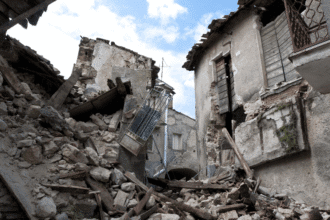India’s aviation watchdog, the Directorate General of Civil Aviation (DGCA), has identified fifty-one protection violations at Air India at some stage in its routine audit. While these lapses are not related to the recent crash regarding a Boeing 787, the audit findings come at a time when the airline is under intense scrutiny following the tragedy. This audit, a part of the DGCA’s fashionable annual exams, is geared toward making sure protection compliance and highlighting areas for operational improvements across India’s airline industry.
- What Were the Findings of the DGCA Audit for Air India?
- How Do Safety Violations Impact Air India’s Operations?
- What Is the Role of the DGCA in Ensuring Safety?
- How Is Air India Responding to These Violations?
- What Are the Broader Implications of These Safety Findings?
- Final Thoughts: Air India’s Safety Concerns and Future Compliance
What Were the Findings of the DGCA Audit for Air India?
The DGCA’s annual audit discovered a total of 263 protection-related troubles throughout 8 commercial airlines. Air India by myself accounted for forty-four Level 2 findings and 7 Level 1 findings, which can be labelled by means of their severity. Level 1 findings suggest vital protection lapses, which can at once endanger passenger protection, while Level 2 findings are much less extreme but pose a liability threat to operations.
The particular information about Air India’s violations has not been absolutely disclosed; however, they include issues about insufficient pilot education and unsuitable use of simulators. In particular, recurrent schooling gaps for Boeing 787 and 777 pilots had been flagged, with a few pilots missing vital monitoring obligations. These findings raise questions about the airline’s dedication to retaining the highest safety standards, specifically in light of its huge fleet and big operations. Here is the link to our article on Plane Emergency Landing
How Do Safety Violations Impact Air India’s Operations?
Despite the findings, Air India has stated that it remained “fully transparent” at some stage in the DGCA audit process and will reply to the regulator within the prescribed time limit. The airline stated the violations and pledged to put into effect corrective actions. However, the revelation of such significant lapses increases worries about the airline’s capability to meet international safety standards.
Airlines in India are given up to 3 months to accurate Level 2 violations, and they have to act without delay for Level 1 violations, which can encompass consequences or maybe suspension of operational approvals. Air India has vowed to take the important actions to cope with those issues and ensure compliance with DGCA hints.
What Is the Role of the DGCA in Ensuring Safety?
The DGCA is tasked with accomplishing regular safety audits as a part of its Annual Surveillance Plan, which aims to discover safety gaps across the aviation industry. According to the regulator, those audits are based on global satisfactory practices and the standards set by way of the International Civil Aviation Organisation (ICAO). The aim is to ensure all airways operating in India comply with the important safety protocols and continuously enhance their operations.
The DGCA also emphasised that for large airways with enormous operations, a higher variety of audit findings is common, as those providers cope with a wider variety of flights and planes. Despite the audit results, the DGCA stressed that India’s aviation industry commonly keeps a sturdy protection record compared to international averages. Here is the link to our article on Plane Crash Landing
How Is Air India Responding to These Violations?
In response to the safety violations, Air India has promised to cooperate fully with the DGCA and publish a detailed corrective action plan. The airline is confident that it will work to remedy the issues mentioned within the audit within the given timelines. However, these violations add to a growing list of safety-related issues. In March, the airline’s price range carrier, Air India Express, was reprimanded for delaying engine part replacements and falsifying statistics.
The airline has recounted its errors and assured the regulator that corrective measures are already in place. According to Faiz Ahmed Kidwai, DGCA’s leader, the airline has self-identified the problem and has been taking proactive steps to prevent destiny lapses.
What Are the Broader Implications of These Safety Findings?
The audit findings come at a time when Air India is under intense scrutiny following a series of fatal crashes involving its planes in recent years. The airline’s performance during those audits ought to have broader implications for its popularity and reputation with passengers. Moreover, the growing fashion of self-reporting safety problems is seen as a positive step, signalling a growing way of life of transparency within India’s aviation industry.
Mr. Kidwai, the DGCA leader, said that the increase in said snags and protection issues is beneficial, because it shows airlines are taking an extra proactive technique in addressing ability risks. He believes that identifying and addressing those problems is some distance safer than allowing them to move unreported.
Final Thoughts: Air India’s Safety Concerns and Future Compliance
The fifty-one Air India safety violations exposed via the DGCA in its audit are a clear indication that the airline needs to enhance its protection practices. While the airline has devoted itself to addressing these problems, the findings underline the continuing challenges that India’s aviation region faces in ensuring passenger protection. By taking swift corrective measures, Air India’s safety violations can be mitigated, and the airline can rebuild and reconsider its operations to meet international requirements.








